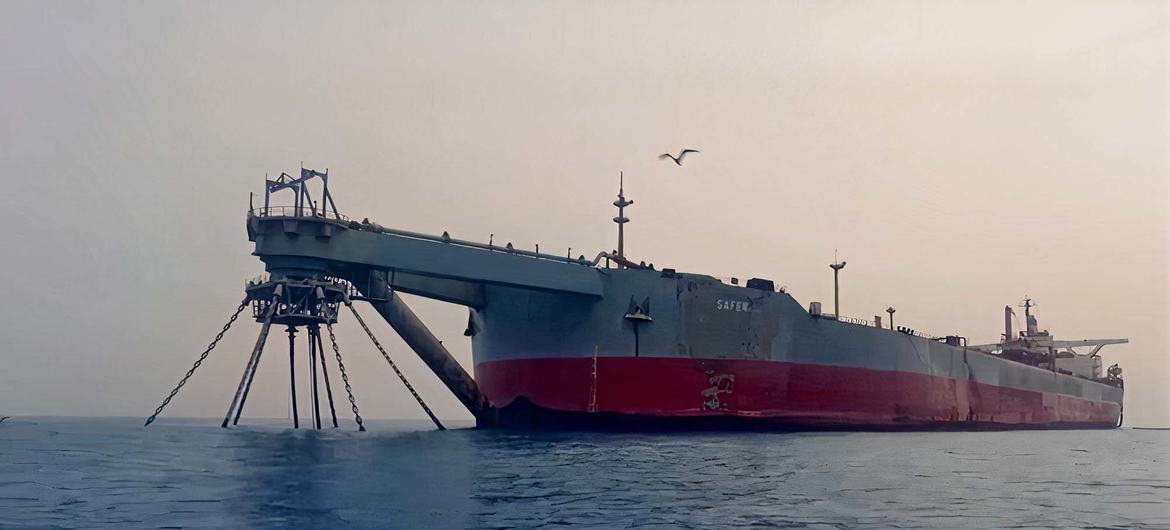The UN received $33 million in new contributions toward a $144 million operation to prevent an oil spill from a ship stuck off Yemen’s coast, which might result in a massive environmental disaster.
Qatar has pledged a $2 million donation to the combat the threat posed by the floating oil tanker ‘Safer’ off Yemen’s coast.
This was announced during Qatar’s speech, presented by Nasser bin Ibrahim Al Langawi, Ambassador to the Netherlands, at a high-level pledging conference for Yemen, co-sponsored by the UN and the Dutch government, to confront the threat of the ‘Safer’ oil tanker.
Al Langawi also praised the UN’s ongoing efforts to negotiate with the Yemeni government over the floating oil tanker ‘Safer’ off Yemen’s coast, as well as the active involvement of UN Resident and Humanitarian Coordinator for Yemen David Gressly.
The FSO Safer, which carries more than four times the oil on board the Exxon Valdez when it ran aground in Prince William Sound in Alaska, in 1989, has the potential to become one of the biggest environmental disasters in history.
The ship might disintegrate or explode at any time, according to international authorities, wreaking havoc on the countries and marine life along the Red Sea, as well as worldwide supply chains that rely on transiting those seas.
The UN has only raised half of the $80 million it needs to start an emergency operation to remove the oil off the ship it calls a “time bomb.”
Officials from the United Nations want the project completed by September, when the risk of a breakup increases due to winter seas.
Since 2015, when a Saudi-led coalition intervened in Yemen’s war against the Iran-aligned Houthis after they deposed the internationally recognised government from Sanaa, the Safer has been stranded off the Ras Issa oil terminal without repair.
The Houthis, who control the area where the tanker is anchored and the national oil company that owns it, inked a pact with the UN in early March to deal with it.
The objective is to move the oil to a secure temporary vessel before arranging long-term storage.
Gressly revealed that the first several months of the work will be spent prepping the perilous vessel for safe oil unloading, which the UN intends to begin within weeks.
“It’s a lot of work required, because it’s in such bad condition and very dangerous.”
The salvage crew will first board the Safer and assess its pumps, valves, and other systems, according to a video posted by the UN on Wednesday.
It anticipates the ship’s oil tanks to be unsafe “due to accumulated cargo vapours,” according to the report.
The lids of the tanks will be opened and hydraulic pumps will be lowered in to transfer the oil to a temporary vessel moored alongside the Safer once they it is declared safe.
The Safer would then be towed away and scrapped after the empty tanks are cleaned to eliminate any remaining oil.
The oil will be stored on the temporary vessel until the UN finds a more permanent storage facility, where it will be held “until the conflict [between the Yemeni government and the Houthi rebels] is basically over, and a peace settlement is in place where we can actually sell the oil and get rid of the problem once and for all,” according to Gressly.
While local organisations in Yemen are relieved that a salvage plan is taking shape, they are concerned that more has not been done to prepare residents along the shore for the possibility of a spill or explosion before or during the operation.







